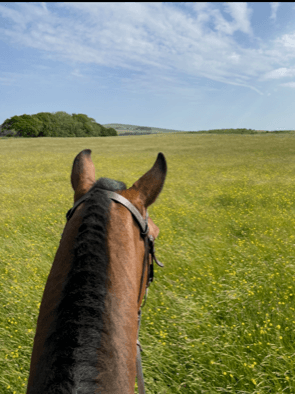Laminitis and quality forage
Laminitis and quality forage
If you have a horse or pony with a history of Laminitis, spring and summer can be a challenging time.
Laminitis is a metabolic disorder, and so your horse or pony does not have to be strictly overweight to contract Laminitis, although weight can be a contributing factor. Those that have fat pads like a cresty neck will be more susceptible to getting Laminitis, even if their overall weight is healthy.
Equines with a history of Laminitis ideally require a forage feed that is less than 10% WSC. Water soluble carbohydrates are the simple sugars and fructans found in grasses, and therefore hay and haylage. It’s these simple sugars that can cause Laminitis.
Hay and haylage that have under 10% WSC are a more suitable forage choice to feed to Laminitis prone equines. We have analysed our forage to ensure that it meets this threshold, although it is important to consider that analysis results can vary and as such you should always seek veterinary advice before feeding any new forage or feeds to your equine.
Many see the warmer months as the time to stop feeding forage as grass can be plentiful and therefore the risk of Laminitis can be higher.
Continuing to feed forage throughout the spring and summer alongside restricted or limited grazing can be a helpful way to support Laminitis control. This is because forage can be easily analysed, weighed and closely controlled when feeding, whereas it can be difficult to manage and control intake through unrestricted grazing. Forage can also be soaked to help reduce the simple sugars in it, again making it more suitable for Laminitics.
How can Hay up Haylage help?
At Hay up Haylage, we understand how important it is to have a supplier who can provide forage that is analysed and remains the same high quality throughout the year to help equines who are prone to Laminitis stay healthy. If you would like more information on the WSC content, and other nutritional information regarding our hay and haylage, visit our Analysis page or get in touch via email.


